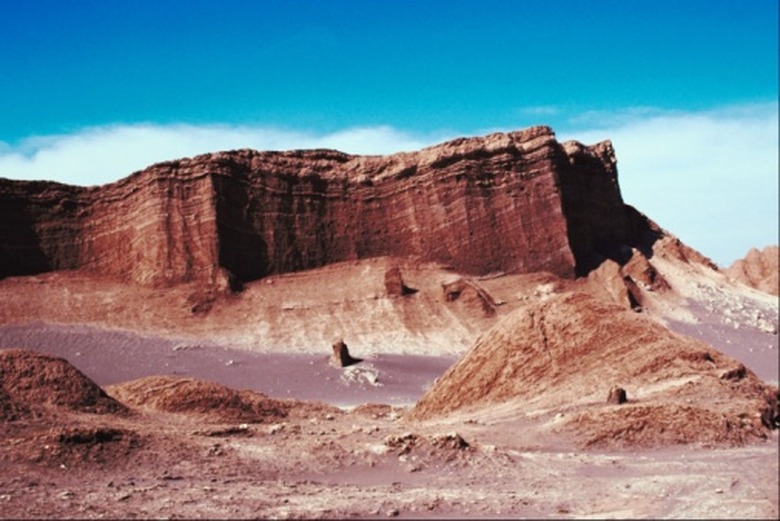Natural Places To Find Saltpeter
Where is saltpeter found? A compound with the chemical name potassium nitrate, saltpeter is also referred to as saltpetre. Historically mined for use in food preservation, gunpowder, fertilizers, pesticides, fireworks and herbicides, saltpeter is a naturally occurring nitrate that is found in caves. Strange as it may sound, saltpeter is produced from the guano, or excrement, of bats. Found in caves across the world and through the Appalachian and Ozark Mountains in the United States, saltpeter was mined extensively in the 19th century for use in the War of 1812 and the Civil War.
Mining and Extracting Saltpeter
Mining and Extracting Saltpeter
In the United States, caves in Kentucky, Tennessee, West Virginia and Arkansas were mined to make gunpowder to fight wars in the 1800s. Dirt from places like Mammoth Cave, Kingston Saltpeter Cave and the Great Saltpeter Cave was mined due to its high concentration of calcium nitrate from rich deposits of bat guano in the caves.
The dirt from the caves was filtered to create a solution of water and calcium nitrate. This solution was then combined with high-potassium materials, like ox blood and wood ash, to precipitate the saltpeter from the solution made from the cave soil.
During the Civil War, the entire process of making saltpeter was often done underground to avoid detection. And during the War of 1812, domestic production of saltpeter for gunpowder was essential, as importation of gunpowder was very difficult to the blockades of ports by the British.
Uses of Saltpeter
Uses of Saltpeter
Besides its importance in the production of gunpowder, saltpeter is used in a wide variety of other applications. Saltpeter is used extensively in agriculture, particularly in the manufacturing of pesticides, fertilizers and herbicides. It is also used as an ingredient in tree stump removal products.
In foods, potassium nitrate is used to cure meats and cheeses – but it is toxic in high levels, so there are regulations about how much saltpeter can be used for these purposes. It is also used to prevent botulism, preserve the color of foods and improve food flavors.
Additionally, saltpeter is used in the manufacturing of fireworks, explosives and rocket fuels. An essential ingredient in the production of glass, saltpeter can also be used to treat metals.
With such a wide range of uses, natural sources of the compound, like caves, could not possibly keep up with the demand for saltpeter. But there are several methods of producing potassium nitrate in a lab, making extraction of saltpeter from caves an obsolete and historical method of production.
Historical Production of Saltpeter
Historical Production of Saltpeter
Chemists now produce saltpeter on an industrial scale in professional labs, using a variety of methods. Many mines that have historically provided the compound are now important archeological sites, providing records and artifacts about the past.
Methods for manufacturing saltpeter date back to the early 1900s, as extracting the compound from caves was not an easy or inexpensive undertaking. In fact, many of the mine workers in the 1800s were enslaved African Americans, who were forced to perform the difficult and dangerous work of digging, hauling and sifting the soil in the caves to produce saltpeter.
Many obsolete saltpeter mines in the United States are now tourist attractions, historical sites where visitors can learn about the extraction and uses of this important compound. One of the largest saltpeter mines in the world, the Humberstone and Santa Laura Saltpeter Works, is in the South American country of Chile. Like saltpeter mines in the United States, these once important sites are now abandoned. However, they've been designated by UNESCO as a World Heritage Site because these sites provide an interesting glimpse into the historical importance of saltpeter mines.
Cite This Article
MLA
Sloane, Christina. "Natural Places To Find Saltpeter" sciencing.com, https://www.sciencing.com/info-8501630-natural-places-saltpeter/. 1 December 2021.
APA
Sloane, Christina. (2021, December 1). Natural Places To Find Saltpeter. sciencing.com. Retrieved from https://www.sciencing.com/info-8501630-natural-places-saltpeter/
Chicago
Sloane, Christina. Natural Places To Find Saltpeter last modified March 24, 2022. https://www.sciencing.com/info-8501630-natural-places-saltpeter/
